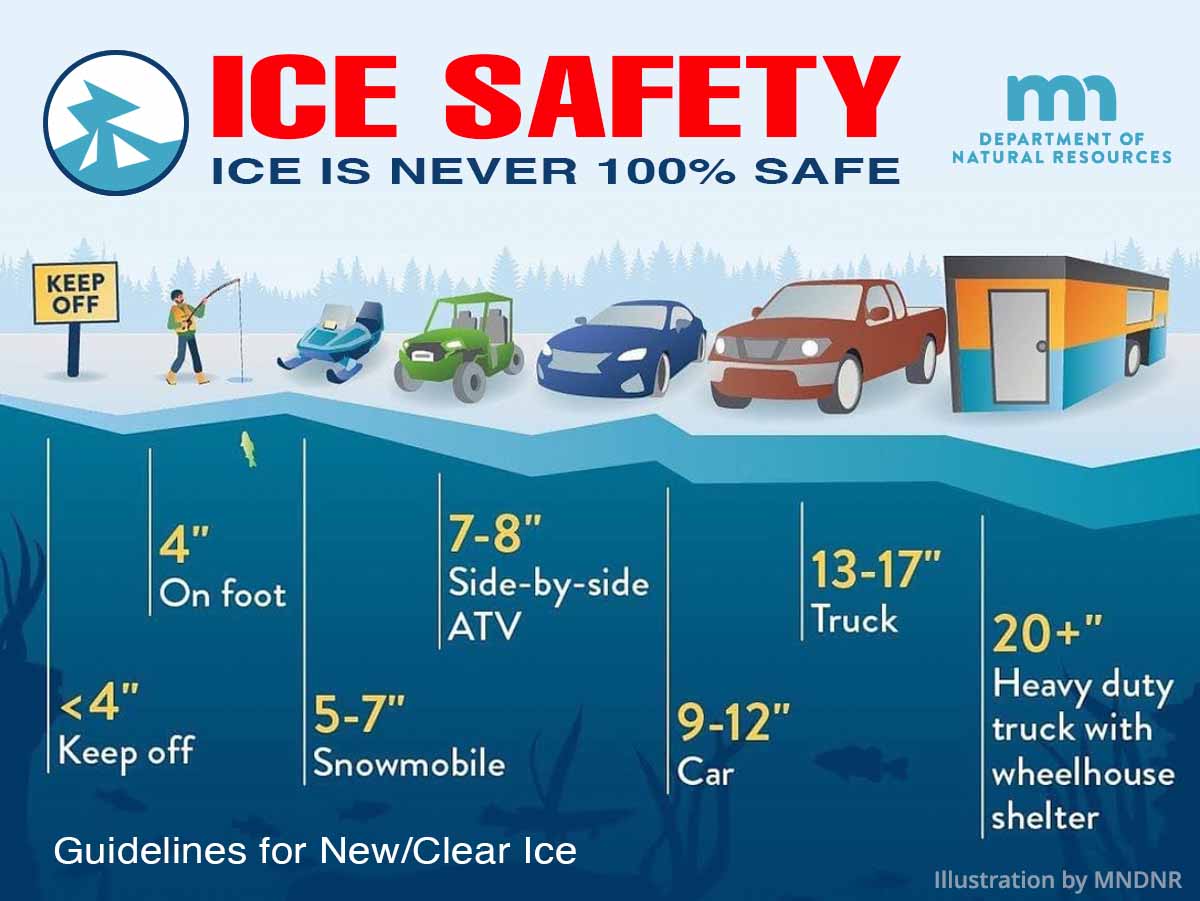-
Use MORR today! Explore MORR. Adventure MORR. Live MORR.
-
 Snow Depth
Snow Depth
» NOAA -
 Snowfall Reports
Snowfall Reports
» CoCoRaHS -
 Wind Chill Calculator
Wind Chill Calculator
» NOAA -
 Wind Chill Chart
Wind Chill Chart
» NOAA -
 Road Conditions 511
Road Conditions 511
» MnDOT -
 Real-Time Road Conditions using Google Traffic Layer
Real-Time Road Conditions using Google Traffic Layer
» Google -
Use Google Maps or MN 511 with the "traffic speed" layer turned on and you will be able to use it to view real-time road conditions in great detail!
The traffic layer shows colors representing the speed of traffic compared to normal conditions. This not only gives you the current state of traffic, it also gives you a real-time idea of the current road conditions because the average speed varies based on the condition of the roadway. The closer you zoom in, the more detail you will get. This gives you a better idea of the current situation compared to the broad descriptions of "partially" or "completely" snow-covered designations.
 BENDARE PRO TIP: Find a safer route during a severe winter storm by sticking to the roads that have a "traffic speed" layer colored green. The "green" indicates that the vechicles are moving at normal speeds. This could be due to the road being flat and/or straight rather than hilly and/or curved, recently plowed, or not getting hit by the worst of the storm.
BENDARE PRO TIP: Find a safer route during a severe winter storm by sticking to the roads that have a "traffic speed" layer colored green. The "green" indicates that the vechicles are moving at normal speeds. This could be due to the road being flat and/or straight rather than hilly and/or curved, recently plowed, or not getting hit by the worst of the storm.How it works:
Real-time data is collected by sensors and anonymous smartphone users on the roadways. This data is compared to the average speed of the vehicles during normal conditions and then colors the road accordingly. Green=good, Orange=not ideal, Red=bad. If the road isn't colored green, orange, or red, then the system doesn't have enough data at that moment to predict a current level.

-
 Outdoor Recreation Map
Outdoor Recreation Map
» MN DNR -
 The Great MN Ski Pass
The Great MN Ski Pass
» MN DNR -
 Ski Pass Trails Map
Ski Pass Trails Map
» MN DNR -
 Ski & Snowmobile Trail Conditions
Ski & Snowmobile Trail Conditions
» MN DNR -
 Ski Trails & Conditions (Minneapolis)
Ski Trails & Conditions (Minneapolis)
» MPRB -
 Ski Trails & Conditions (Duluth)
Ski Trails & Conditions (Duluth)
» DuluthMN .gov -
 Downhill Trail Conditions: Ski, Snowboard, Tubing
Downhill Trail Conditions: Ski, Snowboard, Tubing
» MSAA -
 Downhill Trails Map: Ski, Snowboard, Tubing
Downhill Trails Map: Ski, Snowboard, Tubing
» MSAA -
 Snowmobile Trails Map
Snowmobile Trails Map
» MN DNR -
 Snowshoeing
Snowshoeing
» MN DNR -
 Candlelight Trail Events (Hike, Snowshoe, Ski)
Candlelight Trail Events (Hike, Snowshoe, Ski)
» MN DNR -
 Fat Biking
Fat Biking
» MN DNR -
 Ice Fishing
Ice Fishing
» Explore MN -
 Ice Out Status
Ice Out Status
» MN DNR -
 Lake Superior Satellite Images (Recent Ice Cover)
Lake Superior Satellite Images (Recent Ice Cover)
» NOAA -
Ice conditions vary greatly and change quickly. There can be major differences from one water body to another. The ice can also vary on the same body of water.
Check ice thickness for yourself. Do not rely on others' information or follow footprints or other tracks in the snow without checking first.
White ice forms when snow melts on top of a sheet of ice and refreezes. It is only half as strong as newer, clear ice, so double the recommended guidelines for white ice. Ice is usually thinnest near inlets and outlets, shallow areas with heavy vegetation, moving water and springs, and around structure like logs, rocks, bridges, and docks.

Learn more ice safety tips and discover helpful resources.
This quick-view, calendar style Minnesota hunting and trapping seasons and limits guide, by Bendare Outdoors, is available as a FREE PDF in different versions based on species.
This guide is organized in a simple monthly layout that helps you find what you are looking for quickly. Minnesota has several different hunting and trapping seasons based on location and type of animal. This guide provides information on hunting all species in Minnesota, including big game, furbearers, upland birds, and waterfowl. User and printer-friendly.